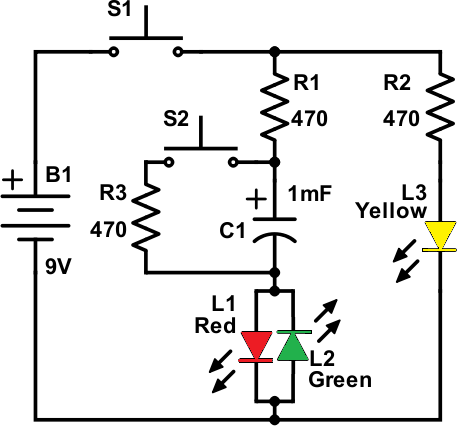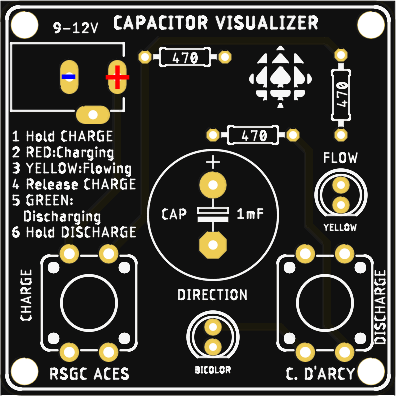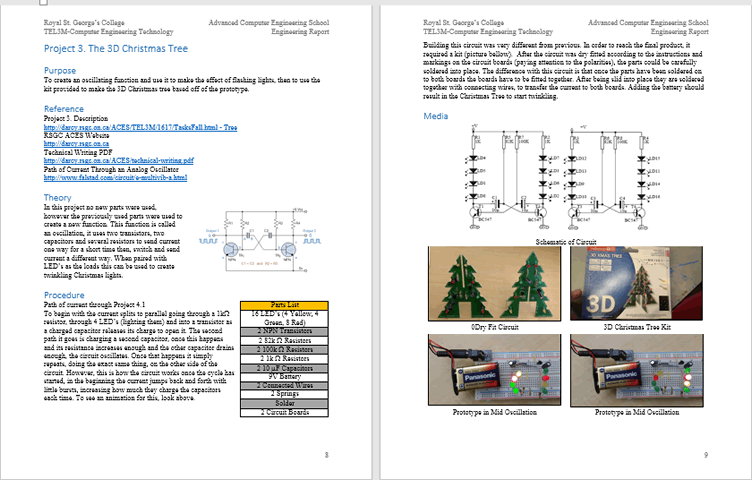 There are no quizzes, tests, or exams in our ACES program. Put another way, you are NEVER put into the position of having a dramatically limited amount of time to demonstrate the skills you have acquired. You can invest as much (or as little) time into your reports as you choose. In return for being granted complete control over the depth and quality of your submissions I can place a premium on detail, precision, and the pursuit of perfection. So, my advice to you if you want to become exceptional is to follow the written and oral instructions carefully and, beyond the required elements of each report, demonstrate tasteful and appropriate creativity and imagination to distinguish yourself from the mediocre. Good luck and, remember, the race is long but it's over quickly.
There are no quizzes, tests, or exams in our ACES program. Put another way, you are NEVER put into the position of having a dramatically limited amount of time to demonstrate the skills you have acquired. You can invest as much (or as little) time into your reports as you choose. In return for being granted complete control over the depth and quality of your submissions I can place a premium on detail, precision, and the pursuit of perfection. So, my advice to you if you want to become exceptional is to follow the written and oral instructions carefully and, beyond the required elements of each report, demonstrate tasteful and appropriate creativity and imagination to distinguish yourself from the mediocre. Good luck and, remember, the race is long but it's over quickly.
Reports. Required Elements
If you do not submit your report by the deadline specified, you receive a mark of 0. This is done as a favour to you to help you appreciate that the real world will dismiss you if you can not demonstrate responsibility and accountability. You are to archive ALL of your reports in the single Word document, ER.docx. The first page is your Title page, followed by a multi-page Table of Contents, after which your reports begin. EACH report will start at the top of the next new page and, unless otherwise specified, consist of the following sections, in the order listed,
Purpose
Reference
Procedure
Media
Reflection
The vast majority of us can tell the difference between quality and rubbish in an instant. As a young scholar you have to decide what your name will stand for. It should matter very little whether you enjoy a task or not; if you're going to attach your name to something it is a direct reflection of who you are.
Project 4. A Counting Circuit
This final activity introduced a simple introduction to fundamental capabilities of many digital devices: counting and display. There are a number of stages or subcircuits in this system and your ER will clearly present the role played by each.
Start your ER with a big picture Theory section,
written in your own words that mentions, generally, the input to the system, the generation of a clock signal consisting of pulses having both a duration and a frequency, culminating in the presentation of the pulse count on the display device. This would an ideal place to present a detailed, margin-to-margin Fritzing diagram, breadboard or (organized) schematic view, to introduce your readers to the full prototype you are about to describe and discuss in three pages that follow.
A Note on Graphics. Graphics should support the text they are illuminating. Poorly composed photos, sloppy and inconsistent choices for diagrams like pinouts and schematics work against you as they can confuse your readers and leave them with a sense that the author doesn't care about his presentation so why should they?
Follow the Theory Section with the six subsections described below. For the first section, Analog Input, include, as a graphic, that part of the schematic that it pertains to. The latter five subsection should start with their own Reference Section that include the respective live hyperlink appearing below for your convenience:
Following the Reference subsection within each of the five areas, include a Purpose section
describing in detail, how each stage contributes to the sequence. Be sure to clearly present the input, processing, and output of each stage, supported by informative, attractive, and well-formatted graphics.
Following the final subsection include Media (captioned photos and video) and Reflection sections.
A. Analog Input
- Purpose (discuss the PBNO switch and the pullup resistor configuration)
- Include your own breadboard/schematic diagram, right-aligned, to
support your discussion.
B. NAND Gate Oscillator (4011)
- Purpose
- Explain, in detail, the function of this chip (Input, Processor, Output)
- Explain the concept of analog input to digital output and how this
chip accomplished this
- Include
a discussion of the pin diagram in this
IC
- Explain what a clock signal is
- Discuss the role played by RC1 and RC2 and the role played by its respective capacitors and resistors.
- Pinout diagram taken from the web and your own breadboard /schematic of the wiring and supportive analog components
C. Decade Counter (4017)
- Purpose
- Explain, in detail, the function of this chip (Input, Processor, Output)
- Explain what it means to ensure ALL of the input pins must be conditioned and
how this is done
- Pinout diagram taken from the web and your own breadboard /schematic of the wiring.
D. Decimal Counting Binary Up/Down Counter (4510)
- Purpose
- Explain, in detail, the function of this chip (Input, Processor, Output)
- Create a two-column table with rows for all 16 4-bit binary values in the
left column and their equivalent decimal values in the right column
- Pinout diagram taken from the web
E. Binary Counting Decimal Decoder (4511)
- Purpose
- Explain, in detail, the function of this chip (Input, Processor, Output)
- Explain the purpose of the Blank, Store, and LampTest pins and how they must
be conditioned for normal use.
- Pinout diagram taken from the web
F. Seven-Segment Display
- Purpose
- Explain, in detail, the function of this component
- Explain the difference between the Common Anode (CA) and Common Cathode (CC)
versions of this component. Which one did we use?
- Explain how the pins on the 4511 and 7-seven semgent make the wiring straightforward.
- Explain why each pin on the display requires its own resistor.
- Graphic (google a similar small image)
- Pinout diagram taken from the web
G. (New for Spring 2019) A Counting Circuit PCB
Once the prototype media has been obtained for your DER (photos and video), ACES wishing to extend their engineering skills are encouraged to convert their breadboard protoype to a more permanent device. A custom printed circuit board was designed and manufactured expressly for the use by Jr. ACES for this purpose. Interested ACES should present their working prototype to Mr. D'Arcy at least THREE days prior to the DER due date in order to receive a PCB. Receipt of such a board comes with the expectation that components will be soldered, the circuit tested, and summarized in text, photos, and video as part of the DER summary for this Counting Circuit project.

H. (New for Spring 2019) A Counting Circuit PCB Case
Congratulations on reaching the final stage (8) of our marathon Counting Circuit project! Students that have successfully soldered their PCBs that demonstrate forward (and backwards) counting on the seven-segment display are provided with a custom case designed and printed in the DES by J. Dolgin (ACES '20) into which their device can be mounted. Click on the image below to watch a time-lapse video created by K. Fiset-Algarvio (ACES '19) of a two-colour case being rendered on our Ultimaker 3.
Power for the device is sourced from a 9V battery inside a compartment within the interior of the case. The leads of a battery snap can be soldered to the correct pads in lieu of an internal DC Jack.

Finally, be sure to address ALL issues from previous submissions and update your Table of Contents before attaching ER.docx to an email to handin under the Subject Line: A Counting Circuit (Complete)
Project ?. The Joule Thief
 There's a lot of buzz these days about wireless (inductive) phone chargers. Advertisements for many new cars squeeze in an image of a deck onto which you place your phone for charging while cable-free. This project begins to look at the circuitry behind this technology by bringing the application closer to home in a fundamental circuit.
There's a lot of buzz these days about wireless (inductive) phone chargers. Advertisements for many new cars squeeze in an image of a deck onto which you place your phone for charging while cable-free. This project begins to look at the circuitry behind this technology by bringing the application closer to home in a fundamental circuit.
| Commercial Phone Charger |
Field of Magnetic Lines of Flux from a Current Through a Coil |
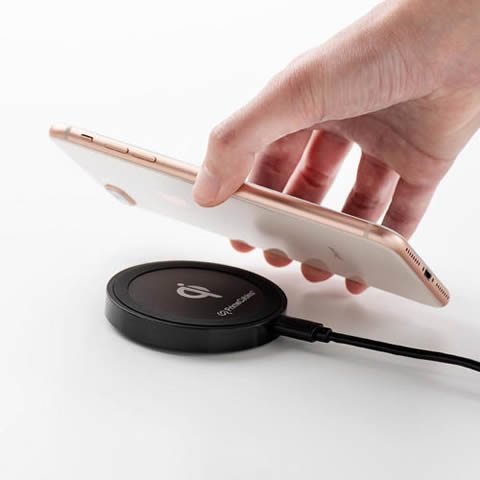 |
 |
It's maddening (not to mention environmentally unfriendly) that 1.5V AA or AAA batteries are as good as useless in your TV remote even when when they still read 1.1V. It's time to get even with those stubborn cells by mining every bit of potential they've got left in them before they head to Home Depot or Home Hardware for a proper recycling. Other names for this circuit can be found under Blocking Oscillator, Vampire Torch, Vampire Flashlight, and DC Boost Converter. Researching any of these phrases could give some of you some great ideas for your ISP.
 Task 1. Look around your home for your stash of, so-called, 'spent' AA batteries. Recall that fresh out of their package, they delivered about 1.6V. Mark them as USED and put one or two in your toolkit as you'll use them in this project.
Task 1. Look around your home for your stash of, so-called, 'spent' AA batteries. Recall that fresh out of their package, they delivered about 1.6V. Mark them as USED and put one or two in your toolkit as you'll use them in this project.
By now you are aware that voltage requirements for LEDs correspond closely with their relative position on the visible spectrum with RED requiring roughly 1.7V to BLUE and BRIGHT WHITE pushing 2.8V-3.1V.
Task 2. Although it's a bit of a lost cause, see if you can light up any LED in your kit with one of those 'spent' AA batteries directly.
A review of the datasheet for the clear white LED pictured you have been provided with indicates, on page 4, that an average forward voltage of 2.8V is required for this lamp to function normally. The purpose of the project is to take a minimal voltage source like a used, 1.5V, AA battery and boost its voltage high enough to light the 2.8V lamp. This is essentially the principle behind the ubiquitous solar garden light!
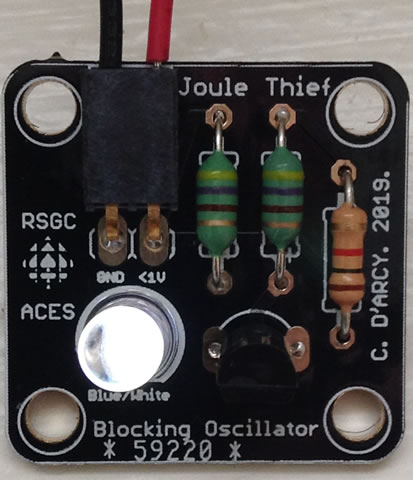 Research (be sure to undertake these steps prior to completing the required task)
Research (be sure to undertake these steps prior to completing the required task)
- Review a few principles relating electricity and magnetism: ACES' Frame Player: Field Forms
- Using a DMM test a fixed resistor for continuity. Explain this result.
- Using a DMM test an inductor for continuity, Explain this result.
- You should be aware that a Capacitor uses VOLTAGE to store energy whereas an inductor uses CURRENT!
- An inductor can also be called a choke? Why is this term appropriate?
- A boost converter is a device designed to increase voltage. What similar name is given to a device used to decrease voltage?
- Review the four scope traces obtained in the DES of the device you are about to prototype at the 0.6V, 0.7V, 0.8V and 0.9V levels through the Frame Player: Joule Thief. Offer a possible explanation of these wave forms.
Task.
- Breadboard the schematic of the Joule Thief provided above, left. Be sure to capture media for your DER and video in the process.
- Transfer your circuit parts to the PCB provided and connect a spent 1.5V alkaline battery to connector.
- TBD...
 Winemake: Joule Thief
Winemake: Joule Thief
Evil Mad Scientist: Make a Joule Thief with a Toroid core
ACES Frame Player: Toroid Winding
Good Inductor videos:
 Still looking
Still looking
A good pair of Simply Electronics videos on inductors:  Part 1,
Part 1,  Part 2
Part 2
Falstad Simulation: http://tinyurl.com/y3a8pspu
Talking Electronics: Solar Garden Light
ISP?:  Assembling a Joule Thief after winding a Ferrite Core
Assembling a Joule Thief after winding a Ferrite Core
White LED Drive Circuit
RSGC ACES Solar Garden Light
Talking Electronics
Project 3. The Astable Multivibrator

 The Square Wave, a highly orchestrated sequence of alternating high and low durations, is the backbone of modern, digital, communication. The purpose of this project is to introduce you to the transistor and to demonstrate how it can be combined with other familiar analog components to produce an oscillating signal with properties similar to the digital square wave.
The Square Wave, a highly orchestrated sequence of alternating high and low durations, is the backbone of modern, digital, communication. The purpose of this project is to introduce you to the transistor and to demonstrate how it can be combined with other familiar analog components to produce an oscillating signal with properties similar to the digital square wave.
Task.
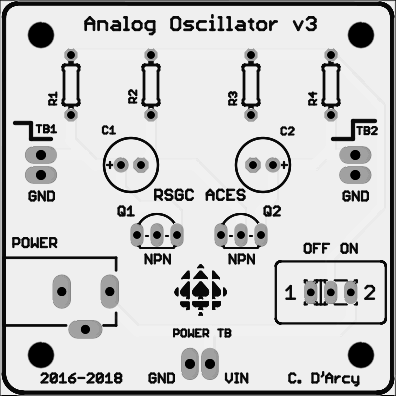 Clean the lens of your phone's camera, as you will be gathering media (photos and videos) throughout this project, from start to finish, in support of your DER project summary due Saturday April 20.
Clean the lens of your phone's camera, as you will be gathering media (photos and videos) throughout this project, from start to finish, in support of your DER project summary due Saturday April 20.- This project will test your organizational and time-management capabilities as much as your nascent electronics' knowledge and skills. Part of the task includes thinking deeply about what you're doing, something a number of you have admitted in your Reflections you need to do more of.
- After studying and reviewing the schematic of the circuit below, left (also found on page 39 of our workbook), undertake a prototype of your astable multivibrator (aka analog oscillator, blinker) on your breadboard. When you are confident the circuit has a chance of functioning, apply 9V power. Debug as necessary and document the results with your phone's camera.
You may wish to experiment with the rate at which the LEDs are flashing (timing) by adjusting the sizes of the RC (Resistor/Capacitor) subcircuits.
- Once you have obtained your media present your working prototype to me to receive the additional parts to complete your soldered circuit board (custom PCB, slide switch, and three terminal blocks). Disassemble your prototype and 'dry fit' the parts on your PCB and show me if you like. This is an important step to appreciate the full scope of the task that lies ahead and to avoid the risk of soldering parts incorrectly that can be difficult, or near impossible, to repair.
 With your soldering area fully equipped with easy access to the required tools and conscious of the soldering techniques and strategies discussed in class and in this soldering video, you may begin the soldering stage. Remember,
With your soldering area fully equipped with easy access to the required tools and conscious of the soldering techniques and strategies discussed in class and in this soldering video, you may begin the soldering stage. Remember,
- Never solder with the power plugged in.
- Your soldering station should be kept no higher than 300°C.
- Keep the parts as tight to the surface of the PCB as possible. The reverse tweezers can help with this.
- The soldering tip should be clean and tinned.
- Any longer than 4s with the soldering tip on the leg of a component runs the risk of damaging the parts!
- Solder the smaller components first: resistors, then transistors, then pin headers, then DC jack, and finally the capacitors.
- On multi-legged semiconductors, it is good practice to solder one leg, solder another part, then return to the original part. This practice minimizes the cumulative heat effect on parts.
- If you have invested care and thought into your efforts, plugging your 9V adapter into the DC Power Jack should yield the desired outcome: a pair of blinking lights. If it doesn't function as expected, prepare yourself for the best part: debugging. Seriously, few activities are as satisfying as analyzing and repairing a faulty system. Use the large illuminated magnifying glass to check all your solder joints. Confirm your polarized parts are in the correct way. Use the DMM to to perform continuity, voltage, and integrity inspections. You WILL find the problem without the need to ask for my intervention.
- DER. Starting on a new page, add the Project name and complete sections under the subheading: Purpose, Reference, Procedure, Media, and Reflection. Text is developed in accordance with the recommendations for Technical Writing and reflective of your much-improved formatting abilities. Graphic manipulation is undertaken according to the specifications laid out in the Design Engineering Report General Guidelines.
- Attach your DER to an email to handin with the Subject: The Astable Multivibrator by the deadline.
Project 2. The Capacitor Visualizer
 Along with resistors, capacitors belong to a family of components known as passives in that they do not introduce a new source of energy into a circuit. Capacitors serve a number of useful functions in both DC and AC circuits. In completing this project you will strengthen your understanding that the capacitor (in series with a resistor), plays in the timing aspects of analog DC circuitry.
Along with resistors, capacitors belong to a family of components known as passives in that they do not introduce a new source of energy into a circuit. Capacitors serve a number of useful functions in both DC and AC circuits. In completing this project you will strengthen your understanding that the capacitor (in series with a resistor), plays in the timing aspects of analog DC circuitry.
This project takes time to undertake properly, so be patient, and start early.
The schematic, below left, is of a straightforward test circuit that, in my view, best illustrates of the functional behaviour of an electrolytic capacitor in a DC circuit. You are familiar with the concept of a voltage divider from your first project. Looking at the junction (node) between S1, R1 and R2, we introduce the notion of a current divider as the current splits into two branches due to their parallel configuration.
We have discussed the charging of an empty capacitor and the effect this has on the capacitor in terms of its resistance (in AC circuits this property is referred to as reactance). In a DC circuit, a single RC Time Constant, denoted τ, can be expressed simply as,
`τ=R×C`
where τ is measured in seconds, R is measured in Ω, and C is measured in F. Also discussed in class (p. 33) is the expectation that after 5 RC time constants the capacitor is virtually fully charged (5τ~99%). One of the objectives of this project is to observe and confirm the expected results.
Task.
- To achieve the best results for each of the numerous trials, the capacitor should be fully drained. In the Procedure section of your report, explain how this is achieved in the circuit to the right.
- On a breadboard, prototype the circuit above left as neatly as you can using the first pair of resistor-capacitor values in the table below. Connect the longer lead of the bicolor LED to the capacitor and the shorter lead to ground. This ensures the orientation that agrees with the schematic. Note: Be sure to drain the capacitor and measure the voltage with your DMM to be sure. Explain this step in your Procedure and explain any related issues you have in achieving this.
- Once connected, hold the momentary button down for at least 10 seconds before releasing it. Note the behaviour of the LEDs in particular, and try to explain what electrical behaviour at work, throughout. Do this a number of times until you feel you understand the principles.
- Now, more formally, using the timer on your phone, and through observation, record the approximate charging time for a fully discharged state until your eyes can no longer detect a visible state change in the red LED. A DMM can be used for more accurate results. Perform at least three trials with the first Resistor-Capacitor pair and record the average.
- For your DER, you are asked to duplicate the table that appears below. In the third column determine and enter the theoretical (expected) time to fill. In the fourth column, enter your observed result.

- Repeat Steps 3 and 4 for each of the remaining 2 RC pairs in the table. Again, perform a number of trials with each pair and record the average.
- For your DER summary of this Project, you MUST remember to obtain media of your prototype (both still images and video), before you dismantle it to solder together your completed device on the PCB provided. Be sure to watch the Instructional video, prior to soldering. Finally, demonstrate a working version of your soldered PCB to me by Thursday to obtain a custom case for your device.
- In your DER, be sure to include the required sections listed above. It is up to you to decide the supporting images and graphics that engage your readers and leave them with a solid understanding of the concepts. The table below is large enough to be center-aligned on your page. Be sure to insert the correct formula in the third column that will correctly and dynamically evaluate the values in the first two columns of same row.
- Attach your (corrected) DER to an email to handin under the Subject Line: The Capacitor Visualizer by the deadline.
Project 1. The 111 Voltage Divider
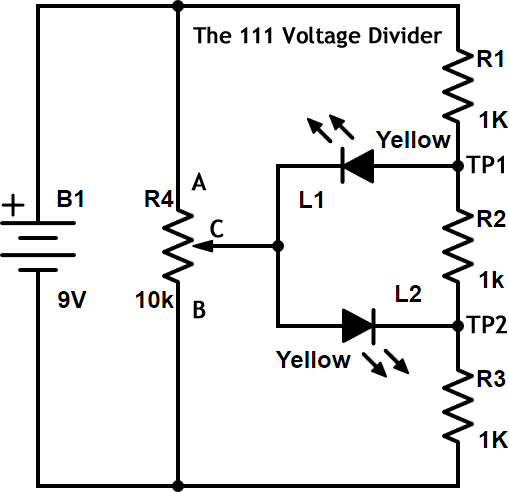 One of the most important skills an Engineer MUST possess is the ability to communicate, both in verbal and written form, in a highly prescribed and structured format. Developing this skill takes much practice and this is precisely why the Design Engineering Report plays such a crucial role in our program, your mark, and your future.
One of the most important skills an Engineer MUST possess is the ability to communicate, both in verbal and written form, in a highly prescribed and structured format. Developing this skill takes much practice and this is precisely why the Design Engineering Report plays such a crucial role in our program, your mark, and your future.
For your first Design Engineering Report submission, you are to present your version of The 111 Voltage Divider circuit described in schematic form to the right and discussed conceptually in class. Your writing will reflect your familiarity with the Guide for Technical Writing and, through practice and regular editing, your sentence structure will improve over the years.
Finally, know that the highest credit will be reserved for those students that engage their reports with a PLAN. Writing that contains run-on sentences, repeat themselves, and/or contain poor grammar and spelling skills reflect the lack of such a plan, proofreading, and editing. This also applies to your video summary. Formulate a structure of what you want to present, in a strategic order, have a script and execute it. Nick Vassos is our resident master of the ACES video summary. Check out this one I commissioned Nick to make on Soldering for the Grade 6s.
Task.
- Each project summary in your DER starts on a new page. Since this is your first report, start your page numbering with (Arabic) 1.
- You are now in a position to enter the title of your first report, The 111 Voltage Divider, at the top of the third page of your document, to which you apply the Heading 1 Style.
- For this project summary, subsequent section headings, with the Heading 2 style applied to them, will be Reference, Purpose, Procedure, Media, and Reflection.
- Here are further details of each section, written in the ACTIVE voice (with the exception of the Reflection section),
- Reference - include a hyperlink pointing to the URL of this project description and any other online resource(s) you explored with advantage
- Purpose - one or two short sentences that speak to essential concept(s) being highlighted in his project
- Procedure - discuss the concept of a voltage divider in general, how they are employed in this circuit, what purpose they serve, how the entire circuit works. As well, include a complete right-align, centered alighted cell content and background-shaded Parts Table. Finally include a copy of the schematic above, right-aligned. Specifically, you are also asked to address the following to be woven into FULL sentences, NOT point form.
- the voltage available at Test Point 1 (TP1) and Test Point 2 (TP2)
- the voltage at the C lead of the potentiometer
- why, how, and under what conditions, does current flow, resulting in each LEDs appearing on or off
- Media - clear, high-resolution, detailed and properly formatted photos and YouTube video with explicit URL link
- Reflection - written in the first person and includes any comments you have about the build process, any challenges you overcame and time-management issues, for example (see the three examples on the back of the cover page of our workbook)
- Technical writing is NOT presented in the first or second person. Text should employ either the active or passive voice.
- Develop your own Fritzing breadboard image for inclusion in your submission and store them in your images folder. Include it, right-aligned in your Procedure section, after the schematic and Parts Table
- Create a short (~1 min) video of your project with accompanying explanations and annotations of the components using your own personal account (not your RSGC Google account) and include an explicit link in the Media section. Review some of the best student videos on our ACES' home page to get an idea of what is expected.
- Update your Table of Contents.
- Attach your Engineering Report (DER.docx) to an
email to handin with the Subject: The 111 Voltage Divider by
the required due date.
Remember, your text should be developed in accordance with the recommendations for Technical Writing.
 There are no quizzes, tests, or exams in our ACES program. Put another way, you are NEVER put into the position of having a dramatically limited amount of time to demonstrate the skills you have acquired. You can invest as much (or as little) time into your reports as you choose. In return for being granted complete control over the depth and quality of your submissions I can place a premium on detail, precision, and the pursuit of perfection. So, my advice to you if you want to become exceptional is to follow the written and oral instructions carefully and, beyond the required elements of each report, demonstrate tasteful and appropriate creativity and imagination to distinguish yourself from the mediocre. Good luck and, remember, the race is long but it's over quickly.
There are no quizzes, tests, or exams in our ACES program. Put another way, you are NEVER put into the position of having a dramatically limited amount of time to demonstrate the skills you have acquired. You can invest as much (or as little) time into your reports as you choose. In return for being granted complete control over the depth and quality of your submissions I can place a premium on detail, precision, and the pursuit of perfection. So, my advice to you if you want to become exceptional is to follow the written and oral instructions carefully and, beyond the required elements of each report, demonstrate tasteful and appropriate creativity and imagination to distinguish yourself from the mediocre. Good luck and, remember, the race is long but it's over quickly.



 Task 1. Look around your home for your stash of, so-called, 'spent' AA batteries. Recall that fresh out of their package, they delivered about 1.6V. Mark them as USED and put one or two in your toolkit as you'll use them in this project.
Task 1. Look around your home for your stash of, so-called, 'spent' AA batteries. Recall that fresh out of their package, they delivered about 1.6V. Mark them as USED and put one or two in your toolkit as you'll use them in this project.
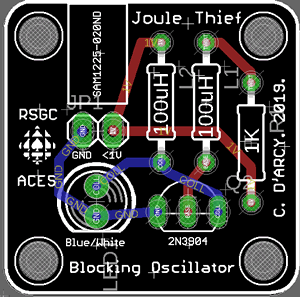

 Winemake:
Winemake: 


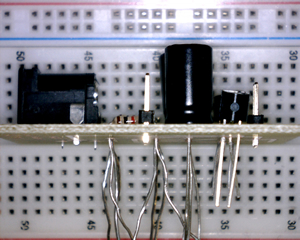
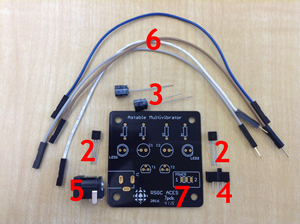
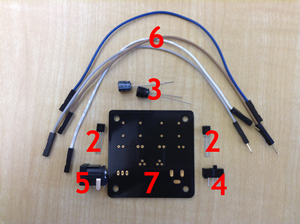
 With your soldering area fully equipped with easy access to the required tools and conscious of the soldering techniques and strategies discussed in class and in
With your soldering area fully equipped with easy access to the required tools and conscious of the soldering techniques and strategies discussed in class and in 
